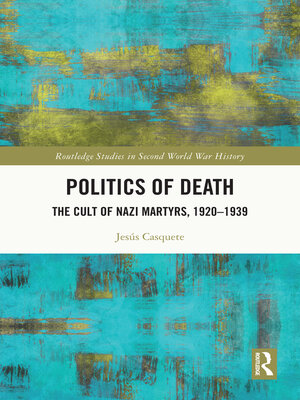Politics of Death
ebook ∣ The Cult of Nazi Martyrs, 1920-1939 · Routledge Studies in Second World War History
By Jesús Casquete

Sign up to save your library
With an OverDrive account, you can save your favorite libraries for at-a-glance information about availability. Find out more about OverDrive accounts.
Find this title in Libby, the library reading app by OverDrive.



Search for a digital library with this title
Title found at these libraries:
| Library Name | Distance |
|---|---|
| Loading... |
To disentangle the National Socialists' path to power in Germany, one must attend to the discursive strategies and liturgical practices employed by its emocrats, or manipulators of emotions. The apotheosis of martyrdom in the National Socialist propaganda template is far from being a marginal element in the movement's history. Owing to its mobilising and unifying potential in constructing a community of memory, the glorification of Nazi martyrdom constituted a fundamental pillar of the movement's communicative and propaganda strategy, stressed to the point of paroxysm.
The propaganda and lies that ground the construction of the martyr as a prefiguration of the "new man" are the core ideas that form the backbone of this book. The Nazis' politics of death was a carefully managed element of National Socialism from its very inception. The martyrs, and their blood sacrificed on the altar of the fatherland, were an invaluable propaganda weapon.
There were three pillars of the Nazi martyrdom frame: sublimation of death, posthumous sugar-coating and "tamed" death. Once the Nazi movement had taken control of German state apparatus, the mechanisms for disseminating the exemplary martyr in society may have changed, but not the specifics of the propaganda strategy itself.







